We’re living through something new: the rise of the creator economy. What if your smartphone, tablet or laptop could become your most powerful business tool? Over 50 million people worldwide are already proving it’s possible, turning passions into opportunities for paychecks without corporate gatekeepers. As the creator economy and opportunities to monetize grow, people increasingly consider content creation for themselves. The digital age has flipped the script on traditional careers, and the tools to build and monetize your own personal brand and succeed in this new creator economy are literally in your pocket.
Remember when TikTok dances and YouTube tutorials were just hobbies? In this new creator economy, these platforms are marketing opportunities that can be monetized, launching six-figure ventures. Platforms such as Instagram and Patreon have become virtual storefronts, where real and messy original content beats polished ads. This isn’t just viral fame. The creator economy is a $250 billion (and growing) movement reshaping how and where we work and how we value creativity.
Independent content creators now compete with media giants, armed with nothing but Wi-Fi, a device and grit. Goldman Sachs predicts this space could double to $480 billion by 2027. Why? Because audiences crave real human connection over scripted content.
But how does it work? From sponsored posts to affiliate marketing to digital courses, content creators are monetizing and mixing multiple income streams. They’re not waiting for permission. They’re building an audience and a personal brand on social media and other platforms. Profits come second. The secret? Treating an audience like family, friends and colleagues – not faceless consumers.
Key Takeaways
- Huge potential: The global market for independent creators could reach $480 billion by 2027
- Short-form video platforms drive 73% of new audience growth
- Authenticity outperforms traditional advertising by 4x engagement rates
- Top earners use 3+ income streams (sponsorships, merch, affilate marketing, subscriptions), multiple platforms and a variety of content
- Community-building and a personal brand doubles long-term earnings potential
- Smartphone content creation alone grew 210% since 2020
Introduction to the Creator Economy
In the creator economy, digital platforms have transformed how content creators turn creativity and content into cash. This ecosystem – fueled by YouTube, Instagram, TikTok, Patreon and more – gives anyone the potential to reach an audience of millions. Over 60% of full-time content creators started as hobbyists, proving you don’t need studio budgets to thrive and monetize.
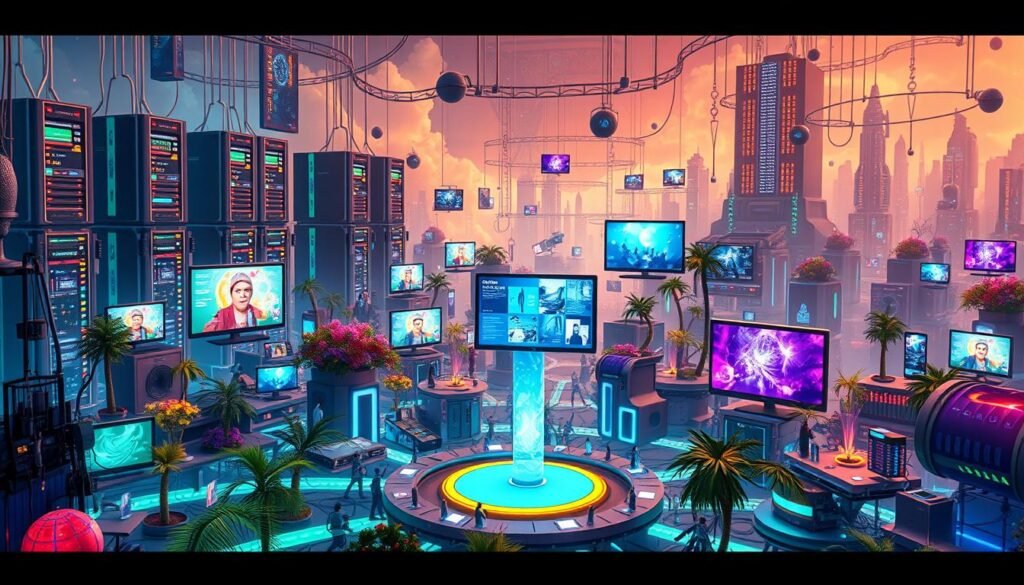
Smartphones, editing apps and other innovations have erased former barriers to entry. A teenager in Ohio can teach coding to students in Tokyo. Stay-at-home parents build affiliate marketing businesses. Aspiring authors and artists can promote their own work by building a following on social media. Platforms such as TikTok and Substack reward consistency over perfection, with bite-sized videos and newsletters driving 80% of new discoverability.
Diversification is key. Top earners use strategies such as mixing affiliate advertising income with memberships and digital products. A baker might sell recipe e-books while livestreaming classes and marketing cooking items on social media, a strategy that uses multiple platforms. This approach builds stability and the ability to ride out fluctuations. When one income stream dips, others balance it out. Fitness coach Tara Smith earns $12k/month via tiered Patreon memberships (live workouts + meal plans).
Global access expands opportunities. The creator economy is not location-dependent. A podcast host in Nairobi can partner with and market brands in New York, thanks to borderless payment systems. Traditional gatekeepers? They’re becoming increasingly irrelevant in this new business landscape, where knowledge and opportunities have been democratized.
Growth and Monetization in the Creator Economy
In this creator economy, individuality and a personal brand is the new currency. Over 40% of full-time content creators earn more than traditional salaried workers in their fields, according to 2023 industry reports. This shift isn’t accidental. It’s fueled by platforms, including social media, that reward originality and consistency and a new range of skills.
Consider Maya Chen, a former graphic designer who pivoted to teaching Canva tutorials on YouTube. By blending her quirky design style with actionable tips, she now earns 3x her previous salary, all while working remotely from Bali. This new paradigm thrives on skills that didn’t exist a decade ago: SEO-optimized storytelling, data-driven audience analysis, and community-driven content strategies. Social media platforms have effectively turned creativity into a scalable business model, where a single viral Reel can attract brand deals, affiliate marketing income, course sales, and speaking gigs. Unlike traditional roles constrained by geography or hierarchies, content creators now leverage global audiences and tools like ChatGPT for ideation or CapCut for editing—proving that uniqueness paired with consistency isn’t just profitable, it’s reshaping modern career aspirations.
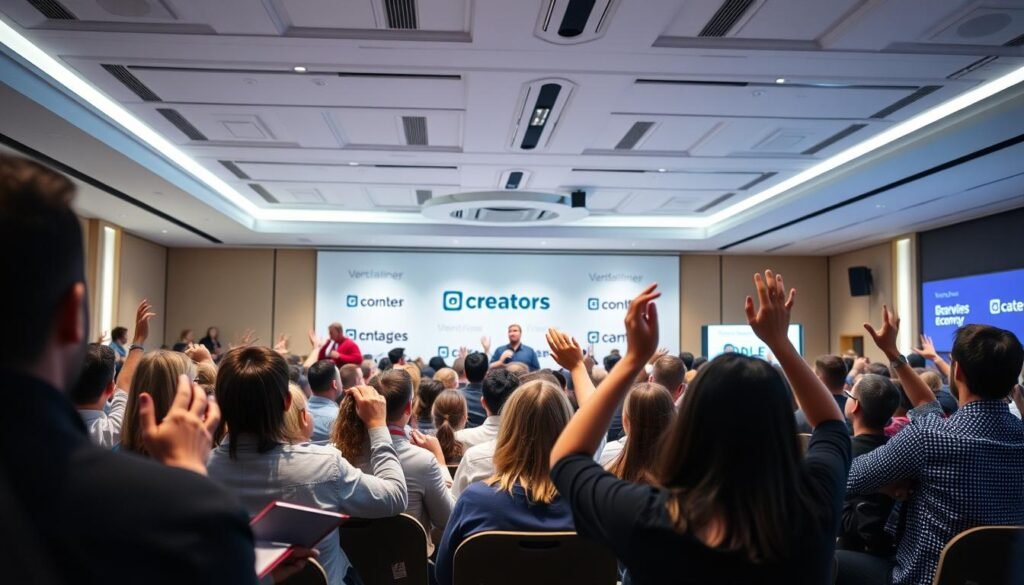
Authenticity – Keeping it Real
Authenticity is a superpower. Marketing pro Jason Silva notes: “Followers spot fakeness faster than a typo in your bio.” Raw moments build trust faster than polished ads. Audiences don’t just want polished content; they crave behind-the-scenes struggles and wins. Chef Priya Krishna’s TikTok bloopers (burnt cookies included) gained 2M fans in 6 months by sharing real experiences and embracing imperfections. People love bloopers, fails and experiences they can identify with. They crave relatable stories, not flawless productions. That’s how trust forms and relationships are built as a foundation for lasting influence. As so many content creators like to say, “just post the content!”
Effective targeting is an essential marketing strategy. A gaming streamer focusing solely on retro RPGs built a 300k-strong community. They now monetize through Twitch subscriptions and vintage console merch. Specific beats generic when growing an audience. Niche products (e.g., retro gaming merch) earn 3x more than generic items.
Collaboration can Happen in Unexpected Ways
The lines between brick-and-mortar and digital entrepreneurship are blurring—28% of recent culinary industry growth now stems from hybrid models where traditional businesses collaborate with social media content creators. Take Sweet Crust Bakery in Austin: once reliant on foot traffic, they partnered with food blogger The Baker’s Table to host virtual sourdough masterclasses promoted via Instagram Reels. The result? A 300% surge in online orders and sold-out in-person workshops, with 40% of participants driving from neighboring states.
This synergy works because it merges local credibility with global social media reach. For instance, NYC’s Café Luna doubled its pastry sales by inviting TikTok pastry chef @DessertDiana to co-create a limited-edition “viral croissant” (stuffed with ube custard, naturally). Patrons filmed unboxings, triggering a 12-day sellout streak and 5,000 new Instagram fans. Traditional businesses are realizing that partnering with creators isn’t just trendy. It’s critical to survival in an era where Google searches for “near me” drop 20% annually and as consumers discover brands online first. Traditional businesses are taking note.
Listen to Your Audience
Succeeding in the creator economy isn’t about shouting into the void—it’s about listening to the whispers of your audience. Fitness creator Lena Cruz built her personal brand and a 150k-member community by hosting weekly “Ask Me Anything” live streams on YouTube, addressing everything from postpartum workouts to budget meal prep. Her secret? Using Polls in Instagram Stories to let her audience vote on topics—a tactic that boosted audience interaction by 62% and revealed an unmet market for “15-minute office workouts,” now her top-selling digital product.
Personalization amplifies loyalty. Indie musician Jax Turner grew a cult fanbase by sending birthday voice notes to top Spotify listeners and featuring their names in song lyrics. This “superfan strategy” helped him sell out three U.S. tours without ads—90% of tickets were bought by an audience who’d engaged directly via DMs. The lesson? When you treat your audience as collaborators (not consumers), they’ll fuel your growth organically. Thriving hinges on understanding your tribe’s needs. Weekly Q&A sessions and personalized shoutouts create fierce loyalty. When fans feel heard, they become brand ambassadors—no marketing budget required.
The Evolution of Digital Platforms
Gone are the days of traditional media when TV networks dictated what content reached audiences. Today’s digital landscape empowers anyone with a phone to become a global broadcaster, and many have done so. Some independent journalists in the creator economy have more viewers than some traditional media outlets. This shift has rewritten the rules of storytelling, community-building, and cultural influence.
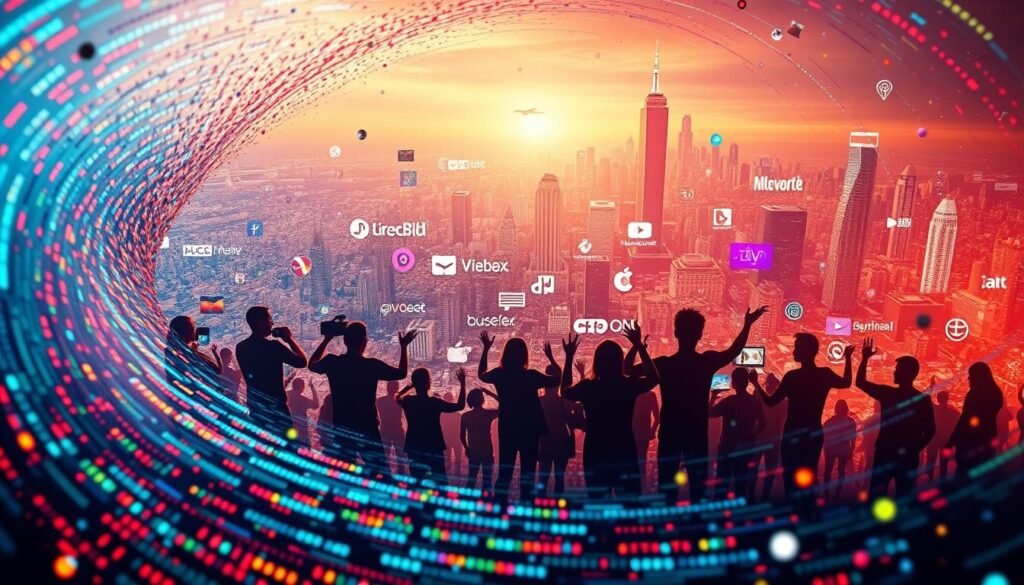
Social Media’s Role in Transformation
Platforms like Instagram and TikTok have revolutionized content creation by turning passive viewers into active collaborators. Features such as Instagram Stories Polls and TikTok Duets foster two-way conversations, enabling creators to crowdsource ideas, test concepts, and co-create content. For instance, a beauty influencer might use TikTok’s Stitch feature to remix a follower’s skincare routine, while a fitness coach could deploy Instagram’s Questions Sticker to let audiences vote on the next workout video. Tools like Hootsuite or Sprout Social amplify this interaction by centralizing comments and DMs across platforms, while Mention tracks real-time feedback to identify trending topics.
These real-time feedback loops, powered by analytics tools like Instagram Insights and TikTok Analytics, allow creators to pivot strategies instantly—something rigid corporate focus groups could never achieve. For example, when a travel vlogger noticed high engagement on a spontaneous “ask me anything” Live session (tracked via Later’s analytics), they shifted their content calendar to prioritize unscripted Q&As, boosting follower retention by 45%. Chatbots like ManyChat further streamline engagement by automating personalized responses in comments sections, ensuring audiences feel heard at scale. Platforms like Instagram and TikTok have turned viewers into collaborators. Features like polls and duets create two-way conversations between content creators and their audiences. Real-time feedback loops now shape content strategies more than corporate focus groups ever could.
A 2023 study showed user-generated videos receive 3x more shares than professional ads, among other advantages.
Creator Economy Digital Content Success
María Gómez, a Miami-based fitness coach, transformed her passion for Latin dance into a personal brand and a 1.2M-subscriber YouTube empire by mastering the art of audience co-creation via social media. Her weekly “You Pick the Beat” live streams – powered by YouTube Live and promoted via Instagram Story countdowns – allow audiences to vote on everything from song choices (salsa vs. bachata) to workout intensity. Using Super Chat monetization, fans pay to highlight their requests, generating $8k/month in supplemental income while fostering inclusivity.
Gómez credits her success to tools like Canva for designing interactive polls and StreamYard for seamless multi-camera live streams. “The moment I let my community dictate the choreography, retention rates jumped 70%,” she explains. Her 72-hour post-live edits (trimmed into TikTok clips using CapCut) now drive 40% of new subscribers. The result? A self-sustaining loop where her audience feels ownership, evidenced by a 500-person flash mob organized entirely by fans in Bogotá last summer.
Building a Strong Personal Brand
Your personal brand isn’t just a logo or a tagline, it’s the digital fingerprint that distinguishes you in a noisy world. Think of it as the sum of your values, voice, and vision, distilled into every piece of content you create and share to your audience. In an era where 76% of consumers trust individuals over corporations (Edelman Trust Barometer), your realness isn’t just an asset, it’s your competitive edge. Consider how creators like Gary Vaynerchuk or Marie Forleo dominate their markets: they don’t just sell products; they sell perspectives that resonate deeply with their audiences. This starts with knowing what makes your perspective irreplaceable to your audience.
Think of your favorite coffee shop – the one with mismatched mugs and handwritten menus. That’s the vibe your brand needs. Travel blogger Lena Chen tripled her audience by sharing unfiltered hostel experiences through Instagram Stories. Tools like Canva and CapCut help maintain visual consistency without design degrees.
Successful creators like chef Priya Krishna use LinkedIn for recipe discussions and TikTok for bloopers—same voice, different platforms. Opportunities emerge when your digital presence feels like a conversation, not a sales pitch.
Creator Economy Monetization Methods
Turning creativity into cash in the creator economy requires more than just viral moments—it demands smart systems. Creators now leverage multiple income channels that reward both quality content and loyal audiences. Let’s break down the most effective approaches.
Ad revenue remains a staple, but top earners diversify. YouTube pays $3-$5 per 1,000 views, while Instagram Reels offers bonuses for high-performing clips. Sponsorships deliver bigger payouts—micro-influencers charge $500-$5,000 per branded post based on their expertise. Not bad at all!
| Method | Best For | Avg Earnings | Key Platforms |
|---|---|---|---|
| Ad Revenue | Consistent posters | $1k-$10k/month | YouTube, TikTok |
| Sponsorships | Niche experts | $500-$20k/campaign | Instagram, LinkedIn |
| Digital Products | Skill sharers | $2k-$50k/month | Gumroad, Teachable |
| Memberships | Community builders | $5-$50/member | Patreon, Discord |
Exclusive content drives recurring income. Fitness coach Tara Smith earns $12k monthly through tiered Patreon access—subscribers get live workouts and meal plans. “Regular Q&As keep people invested,” she notes.
Direct support thrives on genuineness. Platforms like Ko-fi and Buy Me a Coffee let fans fund projects they love. Podcast host Dev Joshi raised $8k in 72 hours for new equipment through heartfelt listener appeals.
As audiences demand deeper connections, monetization adapts. TikTok now lets creators charge for premium videos, while Instagram tests paid chat features. The formula? Deliver value first—profits follow.
Diversifying Income Streams
In the creator economy, putting all your eggs in one basket isn’t just risky—it’s career suicide. A 2023 Creator Sustainability Report found that 68% of full-time creators credit multiple revenue streams with reducing financial stress and enabling long-term development. Relying solely on ad revenue or sponsorships is like building a house on sand: one algorithm tweak, platform policy change, or economic downturn can wipe out your primary income overnight. Why do 68% of full-time makers sleep better at night? Multiple income streams act like financial shock absorbers.
Photographer Jamal Wright learned this the hard way when Instagram’s 2023 algorithm update slashed his engagement by 70%. Instead of panicking, he leaned into print sales (via Shopify) and Lightroom preset bundles (hosted on Gumroad). Within six months, these streams covered 60% of his income, proving that adaptability trumps reliance on any single platform. Diversification isn’t luxury—it’s survival.
Travel vlogger Elena Cruz tapped Brazil’s booming creator economy by launching Portuguese-language cooking videos alongside her English content. Using localized affiliate links (via Awin) and Brazil-specific sponsorships, she now funds 30% of her income from this audience. “I don’t just translate captions, I research regional holidays and slang to make Brazilians feel seen,” she explains.
Diversification can Lead to New Markets
Musician Example: Duo The Syncopants blend YouTube ad revenue, Spotify streams, and sync licensing (via Musicbed) for TV shows. When Spotify’s payout rates dipped, their sync deals with Netflix documentaries filled the gap. On the other hand, Travel vlogger Elena Cruz tapped new markets by launching Portuguese-language cooking videos. Her Brazilian audience now funds 30% of her work through localized affiliate links. “Adapting content isn’t translation, it’s cultural remixing,” she explains.
Start small: Convert existing content into downloadable guides. Partner with complementary brands for cross-promotions. Test one new stream quarterly. Remember, stability beats viral fame every time.Social media cross-platform synergy amplifies impact. Travel blogger Dev Kapoor turns YouTube vlogs into Twitter threads and Pinterest itineraries. “Repurposing content isn’t lazy, it’s strategic,” he notes. His multi-platform marketing plan doubled his sponsorship offers in 6 months.
Adaptation remains crucial. When Instagram shifted to favor Reels over static posts, makeup artist Lila Torres pivoted within 48 hours. Her quick tutorial transitions now average 50k views, proof that flexibility beats rigid plans.
Essential Tools and Platforms for Digital Success
The right toolkit separates weekend hobbyists from full-time professionals in digital spaces. The competitive landscape of the creator economy demands more than raw talent. It requires smart tech that amplifies your unique value to specific audiences. Content creation thrives on tech like Canva for eye-catching visuals and Audacity for crystal-clear audio editing. Trello keeps projects organized, while Grammarly polishes every word. These solutions triple output quality while cutting production time in half.
Platforms are not one-size-fits-all. Reaching a niche market requires specialized platforms. Olyn lets filmmakers connect directly with fans, bypassing mainstream gatekeepers. BuzzSumo identifies trending topics in micro-markets, helping creators stay relevant. “Tools today let us serve 1,000 true fans instead of 1 million casual viewers,” notes indie filmmaker Rachel Wu.
Continuous learning unlocks new opportunities. Platforms like Skillshare offer courses on emerging AI editing tools. Remember: The creator economy moves fast. The best gear today becomes obsolete tomorrow. Stay curious, test regularly, and let the needs of your audience guide your tech upgrades.
Overcoming Challenges in the Creator Economy
Succeeding in digital spaces isn’t about avoiding pitfalls. It’s about mastering the climb. The most resilient content creators turn roadblocks into stepping stones and find new ways to succeed. Common hurdles in the creator economy include algorithm shifts and creative burnout. Fashion vlogger Kayla Nguyen shares: “My engagement dropped 70% overnight when Instagram changed its Reels policy. I pivoted to YouTube Shorts and regained my audience in 3 months.” Adaptation beats resistance every time.
Virtual events become lifelines during rough patches. Podcast host Dev Patel credits a virtual summit for reviving his show: “Networking introduced me to 3 sponsors and 800 new listeners.” Regular skill-building through workshops keeps skills sharp when trends shift.
Photographer Lina Torres turned trolling into triumph by creating a viral #Flawsome series showcasing “imperfect” shoots. Her raw behind-the-scenes reels now drive 40% of client inquiries. Tough experiences often hide golden opportunities—if you know where to look.
Strategies for Community Building and Engagement
Your audience isn’t just watching—they’re waiting to collaborate with your brand and your content. Modern communities thrive when members feel ownership in your journey. This shift transforms passive viewers into active partners who champion your work. Twitch streamer Carlos Mendez hosts weekly “Game Night” sessions where fans co-play retro titles. His Discord server now funds 40% of his income through member-organized tournaments. Shared values matter more than size—a 500-person group with aligned interests outperforms 50k random followers.
Booktuber Amira Khan turned comment sections into brainstorming hubs. “When readers suggested pairing novels with tea blends, our merch sales tripled,” she notes. Communities unlock hidden potential when given access to creative processes.
Graphic designer Lila Cho shares her Procreate timelapses on TikTok, then converts viewers into students through free skill-building workshops. “Teaching basic techniques creates lifelong supporters,” she explains. Her Patreon community now beta-tests new brushes before launch.
Accessible communication channels prove vital. Fitness coach Ryan Park credits 24/7 Telegram availability for his 92% retention rate. Quick voice messages and behind-the-scenes snaps make an audience feel heard, transforming casual observers into brand ambassadors.
Embracing Innovation in Content and Marketing
Tomorrow’s content breakthroughs are hiding in today’s experimental drafts. With 85% of marketers calling short videos their top-performing posts, platforms now reward those blending AI insights with raw human flair. The key? Treating your feed as a lab, not a lecture hall.
Forward-thinking content creators find ways to mix formats like molecular gastronomy chefs. Think TikTok stitches paired with podcast cliffhangers, or Instagram carousels that unlock Spotify playlists. One travel blogger boosted engagement 140% by turning trip photos into choose-your-own-adventure Twitter threads.
Three game-changing approaches dominated in 2024: AI-generated rough drafts polished with personal anecdotes; interactive polls deciding next video topics in real-time; behind-the-scenes livestreams converted into Substack newsletters
The digital universe now favors those who launch fast and refine faster. A skincare influencer gained 50k followers testing unedited “script flubs” as Reels. “Imperfection became our hook,” she admits. Platforms like CapCut and Canva Magic Studio let anyone produce studio-grade content in minutes.
Success in this evolving world demands treating trends as trampolines, not templates. When Instagram’s algorithm shifted, a comic artist pivoted to LinkedIn text stories—tripling their book sales. The lesson? Your best plan lives where curiosity meets courage.
Redefining the Creator Mindset for Success
The most powerful tool creators wield isn’t a camera—it’s their perspective. Mental rewiring separates temporary hustlers from enduring innovators. Take YouTube educator Sarah Nguyen, who quadrupled her income after shifting from “making videos” to “solving viewer problems.” Her secret? “I stopped chasing views and started tracking real-world impact.”
Graphic designer Marcos Rivera credits his career turnaround to a simple mindset hack: “I replaced ‘I can’t’ with ‘I haven’t learned yet.'” This development-focused approach helped him land corporate clients despite no formal training. His story proves credentials matter less than curiosity.
Resilience thrives on support structures. As podcast host Amina Diallo shares: “My accountability partner spots burnout before I do. We’ve maintained 104-week upload streaks through three family emergencies.” Mentorship programs like Adobe’s Creative Residency now prioritize psychological tools alongside technical skills.
Continuous development creates compounding returns. Chef-turned-educator Priya Kapoor spends 15% of earnings on skill-building: “My sourdough tutorials improved dramatically after taking improv classes.” This cross-training power approach keeps her content fresh and audiences engaged.
Positive thinking isn’t about ignoring challenges—it’s about powering through them strategically. When TikTok dancer Jamal Chen lost 30k of his audience during a platform shift, he launched a #MovementMentorship program. His revamped community now drives 60% of coaching revenue. The lesson? Mindset determines altitude more than algorithms.
Future Trends in the Creator Economy
The next wave of digital innovation is already reshaping how audiences interact with content. By 2026, 72% of successful makers will use AI-enhanced tools daily – not to replace creativity, but to amplify their unique voices. Platforms are evolving from distribution channels to collaborative spaces where fans co-create value.
Meta’s AI-generated characters and YouTube’s auto-dubbing features hint at a seismic shift. These technologies let content creators scale personalized interactions while maintaining trustworthiness. Strategy now involves blending human storytelling with machine efficiency. For example, AI voice cloning enables multilingual content in minutes.
Traditional income streams are merging with Web3 opportunities. Musicians sell song stems as collectibles, while writers tokenize serialized novels. Platforms like Olynsport allow athletes to monetize training clips through microtransactions—fans pay $0.99 per drill tutorial.
Staying ahead in the creator economy requires constant knowledge updates. As Adobe’s Creative Residency director notes: “Creators who master AI-assisted editing tools now will dominate niche markets by 2025.” Monthly workshops and beta-testing new apps become non-negotiables.
Consumer behavior tilts toward interactive experiences and events. Twitch streams where viewers control gameplay outcomes see 80% longer watch times. The lesson? As is true today, tomorrow’s winners treat audiences as active participants, not passive consumers.
Action-Oriented Tips for Aspiring Creators
Success starts with hitting “record” before feeling ready. Chef Priya launched her cooking channel mid-recipe disaster—flour in her hair, smoke detector blaring. That raw video attracted 50k views and her first sponsor. Action beats perfection every time.
- Analyze trending sounds on TikTok before filming
- Repurpose old phone photos into Instagram carousels
- Turn frequent DMs into newsletter content
Understanding your audience’s late-night searches fuels relevance. Makeup artist Lila tripled engagement by creating “3am skincare routine” videos after spotting Reddit threads. “Your comments section is a goldmine of unmet needs,” she advises.
Build relationships through shared growth. For example, Podcast host Dev shares his editing mistakes in a private Slack group. Members troubleshoot together, creating bonds stronger than any algorithm. Reply to comments with voice notes—89% of fans feel more connected through vocal responses.
DJ Marco is another story that proves persistence pays. He livestreamed to empty “rooms” for 6 months. Now, his weekly mixes sell out virtual clubs. Consistency builds compound interest in crowded markets. Track small wins: 10 new fans are 10 reasons to keep going.
Expert Insights and Success Stories
Behind every viral post lies a story of trial, error, and breakthrough moments. Industry leaders reveal how visibility and authenticity become rocket fuel for digital careers. Let’s unpack their playbooks.
Tech reviewer Marques Brownlee (MKBHD) credits his 18M subscribers to one rule: “Explain complex ideas like you’re chatting with a curious friend.” His camera reviews blend technical specs with relatable metaphors, proving that simplicity can win.
Another example is Lifestyle creator Emma Chamberlain transformed coffee runs into cultural moment events. “Audiences smell desperation,” she notes. Her unscripted YouTube vlogs sparked a 300% increase in Gen-Z podcast listeners with no studio required.
Chef Jon Kung’s TikTok wok tutorials went viral during lockdowns. By sharing family kitchen failures, he built a 2M-strong community. Being real meant showing scorched pans alongside perfect stir-fries, a balance that landed cookbook deals.
Podcast host Alex Cooper turned fan theories into show arcs. When listeners predicted guest appearances, she made their guesses reality. This innovation created watercooler moments that tripled download rates.
These stories share a thread: visibility follows value. Whether through unfiltered individual content creation or audience co-creation, lasting success starts with serving the audience first and letting recognition follow.
Conclusion
This has been a brief overview of the Creator Economy. We’ve covered a few strategies to build a personal brand. We’ve provided an overview of a few ways that content can be monetized through affiliate marketing, digital products and more.
Your journey from content creator to community architect in the new creator economy starts now. Start small, but start! Keep learning, but don’t get stuck overthinking. Remember, polished posts don’t build empires; genuine stories do. Post that reel you’ve overthought. Launch a $5 digital guide. Turn comments into conversations. Every creator’s roadmap differs, but successful ones share three traits: consistency beats perfection, niches attract tribes, and trust outlives trends.
True power lies in building your own personal brand, finding your voice and transforming an audience into collaborators. When you share struggles alongside wins, you’re not just building an audience – you’re curating your tribe. This connection becomes your currency, more valuable than any viral moment. It is your market, as well as your support.
The digital frontier keeps expanding, but one truth remains: devices change, algorithms shift, but meaningful connections endure. You are your own brand. What story will you tell?
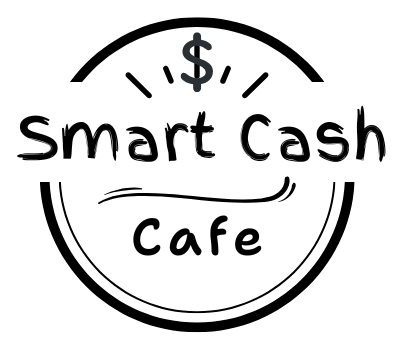
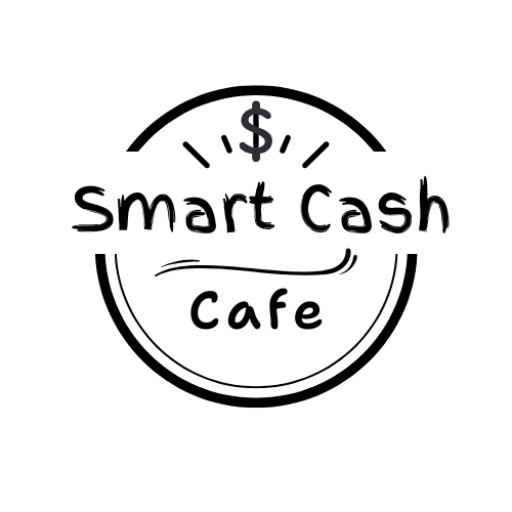
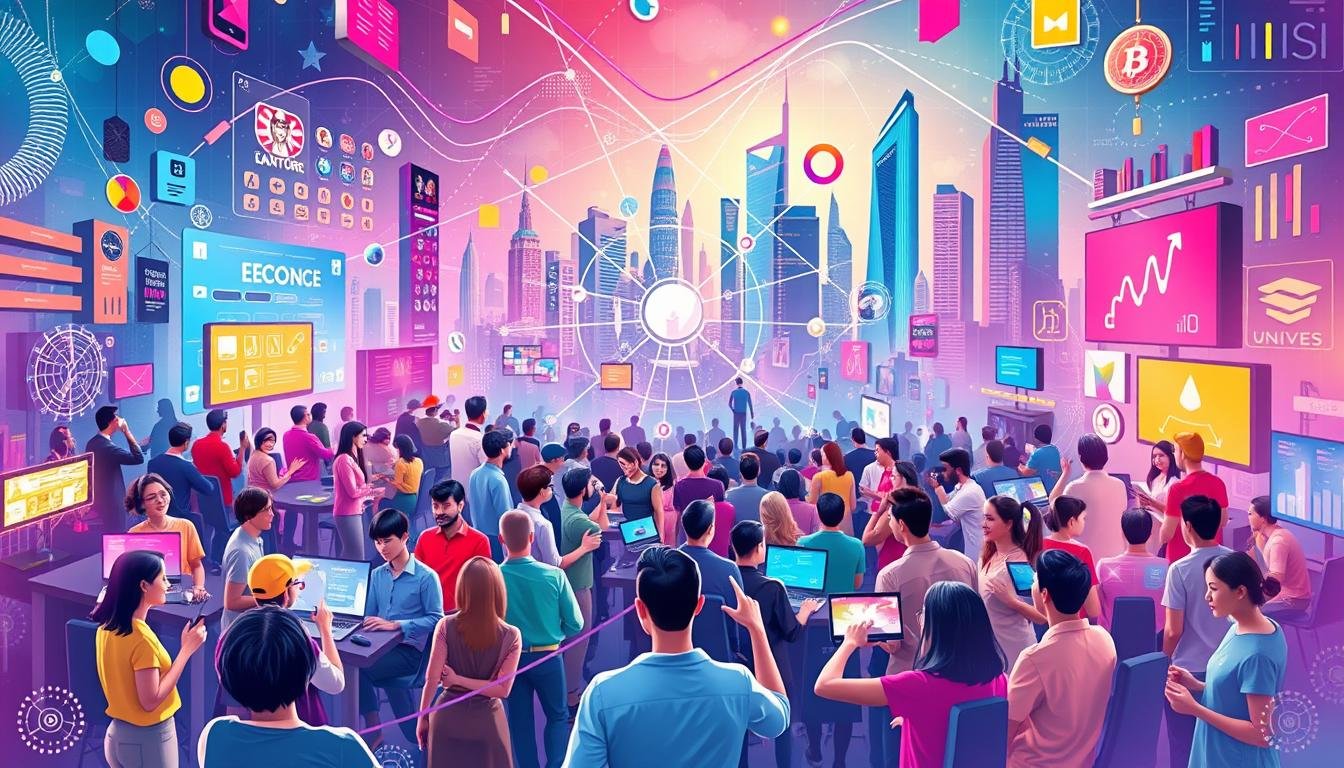



Pingback: How the $10K Blueprint Helped Me Build Something Real - Smart Cash Cafe